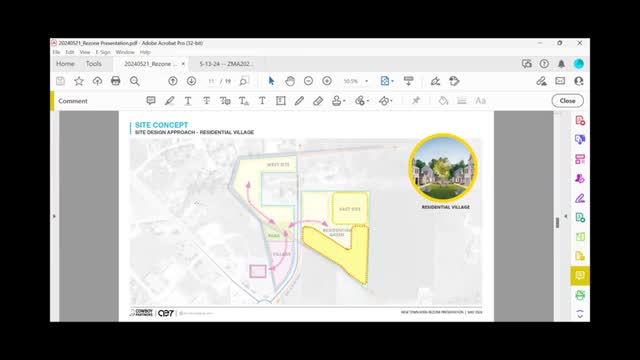Developer outlines challenges of affordable housing zoning in Utah mountain community
May 20, 2025 | Weber County, Utah
Thanks to Excel Chiropractic and Scribe from Workplace AI , all articles about Utah are free for you to enjoy throughout 2025!

This article was created by AI using a video recording of the meeting. It summarizes the key points discussed, but for full details and context, please refer to the video of the full meeting. Link to Full Meeting
One of the key points raised was the challenge of parceling land for new developments. A representative noted that what could ideally be a single parcel for a housing project is instead fragmented into 20 to 25 smaller parcels due to existing zoning regulations. This fragmentation complicates the development process, making it more cumbersome and legally challenging. The representative emphasized the importance of simplifying these processes to facilitate the construction of much-needed housing.
Height restrictions for new buildings were also a focal point of the discussion. Current regulations allow for structures up to three stories tall, with a height limit of 40 feet. While this is deemed manageable, developers expressed a desire for slightly increased height allowances to enhance architectural expression, suggesting that a limit of 45 feet could better accommodate design features like gables and parapets.
The conversation then shifted to the practicalities of garage design in mountain communities, where larger vehicles are common. Developers highlighted the necessity of designing garages with taller doors to accommodate trucks and SUVs, which often have ski racks. Despite these considerations, it was noted that many residents still choose to park outside, indicating a behavioral trend that complicates parking solutions.
Another significant topic was the prioritization of housing for local workers. The commission discussed how to minimize traffic over the area's bridges by ensuring that affordable housing is accessible to those employed within the valley. A representative pointed out that even without formal preferences, developments tend to attract residents who work locally, thus naturally supporting the community's workforce.
The meeting also touched on the nuances of housing preferences under HUD guidelines. While there are no strict resident preferences, the design of marketing plans can prioritize local workers, including full-time employees and first responders. However, the challenge remains in balancing these priorities with the need for housing stability, as residents who may change jobs should not be displaced.
As the meeting concluded, it was clear that the Ogden Valley Planning Commission is grappling with the complexities of creating a sustainable housing environment. The discussions highlighted the need for thoughtful planning that not only addresses immediate housing demands but also fosters a sense of community among residents. With ongoing efforts to refine zoning laws and housing policies, the commission aims to pave the way for a more integrated and accessible living environment for all who call Ogden Valley home.
Converted from Ogden Valley Planning Commission May 21, 2024 meeting on May 20, 2025
Link to Full Meeting
Comments
View full meeting
This article is based on a recent meeting—watch the full video and explore the complete transcript for deeper insights into the discussion.
View full meeting
